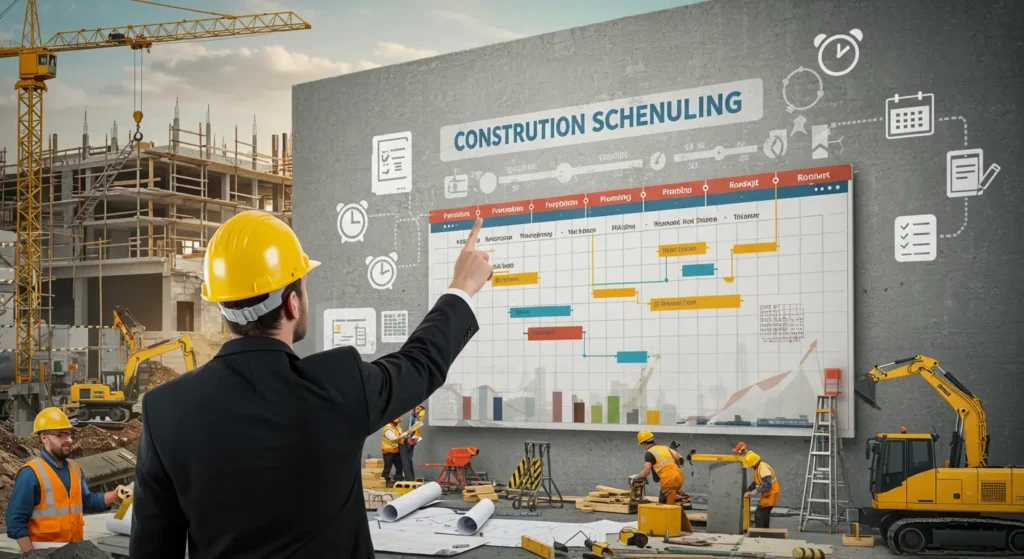Importance of Scheduling in Construction Projects
Effective scheduling is the backbone of every successful construction project. Whether you’re building a home, commercial space, or managing a full-scale infrastructure job, a well-planned schedule keeps everything running on time and within budget. Without it, even the most experienced teams can face delays, cost overruns, and client dissatisfaction.
What is Construction Scheduling?

Construction scheduling is the process of planning and organizing all activities, tasks, materials, and resources involved in a construction project. It lays out when each part of the job starts and finishes, ensuring smooth coordination between trades, deliveries, and inspections.
Why Scheduling is Critical in Construction
Here are some clear reasons why a solid construction schedule matters:
Benefits of a Well-Planned Construction Schedule
Better Time Management
A realistic timeline helps teams stay focused and meet deadlines.
Transparency
Clients appreciate updates and progress reports that show what’s been completed and what’s next.
Reduced Conflicts
Clear scheduling avoids clashes between different trades working in the same space.
Legal Protection
Documentation of your schedule can help protect your company in case of disputes or claims.
Common Scheduling Tools in Construction
Modern construction managers often use scheduling software to simplify planning:





These tools help create visual timelines, track progress, and share updates with your team in real-time.
Key Elements of a Good Construction Schedule
A strong schedule should include:
- Start and end dates for each task
- Task dependencies (what needs to be done before the next starts)
- Assigned team or contractor per task
- Buffer time for inspections, weather delays, or material issues
- Regular update intervals (weekly or bi-weekly checks)
Consequences of Poor Scheduling
Not having a solid schedule leads to:
- Project delays
- Increased labor costs
- Wasted materials
- Client complaints
- Penalty fees in contracts
Tips for Effective Scheduling
Plan Ahead
Start your schedule during the design or pre-construction phase.
Use a Master Schedule
Have one master version everyone refers to.
Update Regularly
Adjust for changes in scope, weather, or supply delays.
Communicate Often
Keep all stakeholders informed of updates or changes.
Final Thoughts
Construction scheduling is more than just a timeline. It’s a strategic tool that brings structure, clarity, and control to complex projects. Whether you’re building a home or a high-rise, taking time to create and manage a strong schedule can be the difference between a stressful build and a smooth success.






